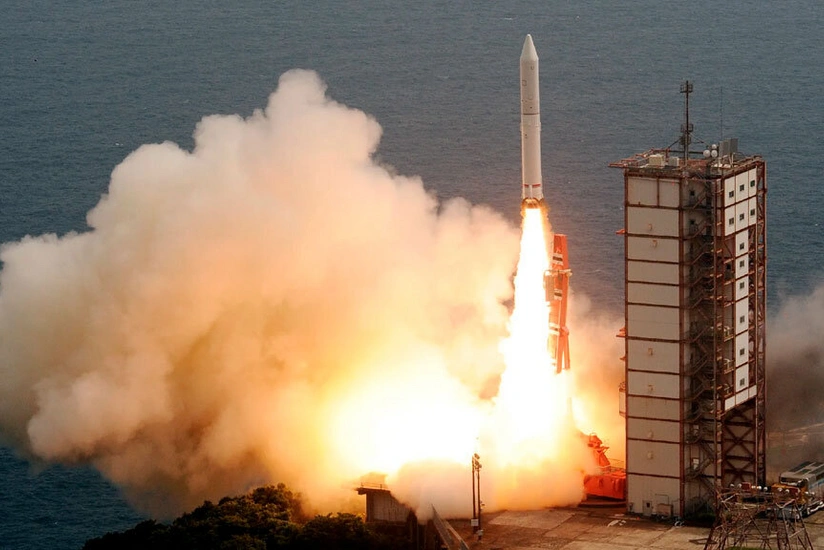Japan successfully puts advanced satellite into orbit using H3 rocket
- 01 July, 2024
- 06:29

The Japan Aerospace Exploration Agency (JAXA) successfully put an advanced observation satellite into orbit via its new flagship H3 rocket on Monday, taking another step toward demonstrating the H3’s viability as an “easy-to-use” rocket, Report informs via The Japan Times.
Applause filled the launch control center at Tanegashima Space Center in Kagoshima Prefecture as JAXA officials embraced following the success of the third H3 rocket launch.
The H3 was carrying the Daichi-4 satellite, also known as the Advanced Land Observing Satellite-4 (ALOS-4), which was jointly developed by JAXA and Mitsubishi Electric following the loss of the Daichi-3 in a failed H3 launch in May last year.
The H3 rocket followed a preset trajectory over the Pacific Ocean, separating into two stages and releasing the satellite into orbit, with the rocket’s remains falling into the Indian Ocean.
JAXA plans to launch six H3 rockets annually, phasing out the older H-IIA rocket, their current mainstay, after its 50th launch later this fiscal year, which runs through March 2025.
All eyes had been on the third launch — and whether it could demonstrate the rocket's sustained reliability amid plans to fully transition to the H3 next fiscal year.
Japan views a stable and commercially competitive space transport capacity as essential not only for its space program but also for its national security needs.
JAXA had initially planned to launch the H3 rocket carrying the Daichi-4 on Sunday, but poor weather conditions caused that attempt to be delayed.
The Daichi-4, built for high-resolution Earth observation, cost around ¥32 billion ($198.7 million) to develop. It boasts a 200-kilometer observation range, quadruple that of the Daichi-2. This extensive range allows it to monitor effectively even at nighttime and in poor weather.
The satellite is capable of detecting ground deformation, landslides, as well as the impacts of natural disasters — including heavy rainfall, earthquakes and volcanic eruptions. In the aftermath of disasters, it can also rapidly evaluate the extent of damage.
Additionally, the Daichi-4 can track the movement of ships with its Automatic Identification System (AIS) signals receiver. AIS automatically sends and receives essential information about ships, including call signs, names, positions, courses, speeds and destinations. This system enhances communication and information exchange among vessels as well as between ships and land-based stations.
